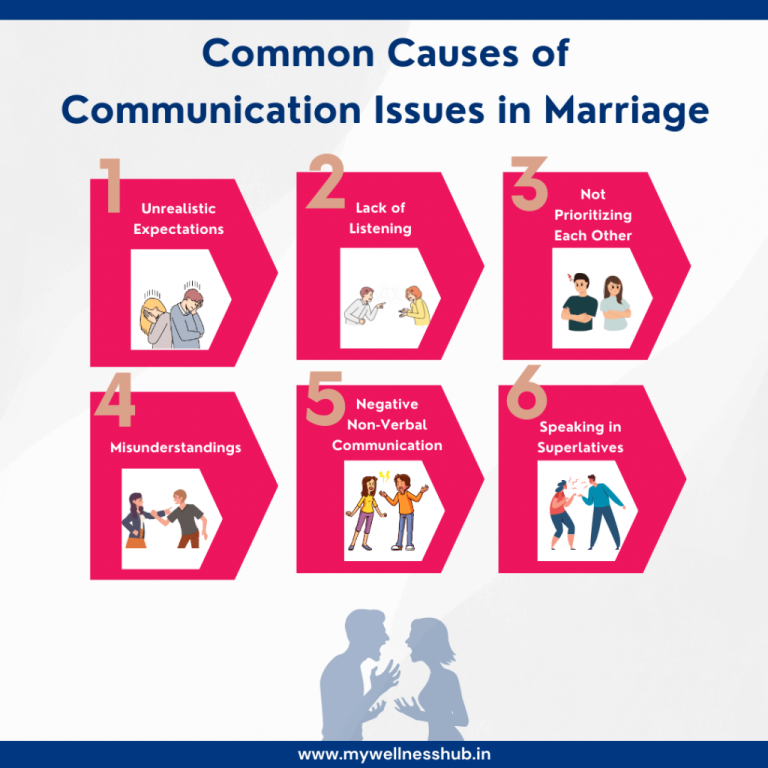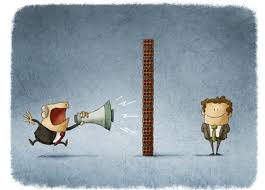Aggressive Communication: Impact and Strategies
Aggressive communication often disrupts effective interactions. It involves expressing thoughts in a forceful way.
This style of communication can lead to misunderstandings and conflicts. It impacts relationships at home, work, or in social settings. Understanding aggressive communication is essential for better connections with others. Imagine a conversation where one person dominates by raising their voice.
The other person might feel attacked and shut down. This is a typical scenario in aggressive communication. Recognizing its signs helps in addressing the problem. It’s not just about shouting or harsh words. It includes body language and tone. This type of communication often stems from frustration or stress. Learning to manage it can improve personal and professional relationships. By becoming aware of aggressive tendencies, individuals can foster more respectful and constructive dialogues.
Aggressive Communication: A Double-edged Sword
Aggressive communication often gets a bad reputation. It involves expressing needs or desires in a forceful manner. This method can sometimes yield quick results. But it can also damage relationships. Understanding its dual nature is crucial. It may seem powerful, but it has its drawbacks.
Pros And Cons
Aggressive communication can help in certain situations. It may help in asserting dominance. People might respond promptly to demands. This can lead to quick decision-making. Yet, it comes with significant downsides. It can create fear or resentment in others. Relationships may suffer long-term damage.
Others might feel undervalued or disrespected. This can lead to a toxic environment. Therefore, it is important to weigh the benefits and risks. Use aggressive communication sparingly.
Real-world Examples
Think about a boss who yells at employees. This might get tasks done quickly. But over time, morale may drop. Workers may feel stressed or unhappy.
In a family setting, a parent may use a harsh tone. This might make kids obey. But it could harm the parent-child relationship. They might feel unloved or insecure.
Consider a coach who uses aggressive tactics. The team might win games. Yet, players might lose enjoyment and passion for the sport.
These examples show the temporary nature of aggressive communication. It might work short-term, but often causes long-term harm.
Psychological Effects On Recipients
Aggressive communication can deeply affect the mind of the recipient. Words filled with hostility can leave lasting marks on mental well-being. Understanding these effects is crucial for both personal and professional interactions.
Stress And Anxiety
Recipients often experience increased stress levels after aggressive encounters. The brain perceives aggression as a threat, heightening stress responses. This can lead to physical symptoms like headaches and upset stomachs. Anxiety may rise as individuals anticipate further conflicts. Constant worry and fear take hold, impacting daily life and decision-making.
Long-term Impacts
Long-term exposure to aggressive communication can harm mental health. Prolonged stress can lead to depression and chronic anxiety. Confidence and self-esteem may decline as negative words linger in the mind. Relationships suffer as trust erodes and communication breaks down. Even professional performance can dip due to ongoing mental strain.
Impact On Workplace Dynamics
Aggressive communication can disrupt workplace harmony, leading to misunderstandings and stress. It often creates a tense environment, affecting team collaboration and productivity. Employees may feel undervalued and demotivated, resulting in high turnover rates.
Aggressive communication can cast a long shadow over workplace dynamics. It disrupts the balance, creating an environment where productivity might falter. When aggression seeps into daily interactions, it can lead to misunderstandings, conflicts, and a breakdown of trust.Team Collaboration Challenges
Aggressive communication often puts team collaboration to the test. It can stifle creativity as employees may hesitate to share ideas, fearing harsh criticism. Imagine you’re in a meeting, and someone dismisses your suggestion with a sharp tone. Would you speak up again? Such scenarios can lead to a lack of participation, diminishing the team’s collective potential. Teams thrive on open dialogue, where every voice matters. Consider how different your workplace might be if aggressive communication was replaced with supportive engagement. How could you foster a culture where everyone feels heard?Leadership And Authority
Leaders who rely on aggressive communication can undermine their authority. Instead of inspiring respect, they may instill fear, leading to a disengaged workforce. Reflect on a time when a manager used aggressive tactics. Did it motivate you or make you apprehensive? Authority should empower, not intimidate. True leadership is about guiding teams with empathy and understanding. Think about how adopting a more constructive communication style could transform your workplace. How would your team react to a leader who listens rather than dictates? Aggressive communication is a barrier that can be dismantled with conscious effort. As you navigate your workplace, consider how small changes in your communication style can lead to significant improvements in dynamics and productivity.
Credit: www.sciencedirect.com
Strategies To Manage Aggressive Communication
Aggressive communication can be challenging to handle. It often leads to misunderstandings and conflicts. To manage it effectively, strategies are essential. These strategies help in fostering healthier interactions. They also promote mutual respect and understanding. Here, we explore key strategies to manage aggressive communication.
Developing Emotional Intelligence
Emotional intelligence plays a crucial role in communication. It involves understanding your own emotions. Recognizing emotions in others is equally important. This understanding helps in responding calmly. It reduces the likelihood of aggressive outbursts. Practice self-awareness to improve emotional intelligence. Observe your feelings in different situations. Reflect on how they affect your responses. Training in empathy enhances your ability to connect with others.
Conflict Resolution Techniques
Effective conflict resolution techniques are vital. They help in addressing aggressive communication. Active listening is a key technique. It involves paying full attention to the speaker. Show empathy by acknowledging their feelings. This builds trust and reduces tension. Another technique is to stay calm. Avoid reacting immediately in heated situations. Take a moment to breathe and think. This prevents escalation and promotes understanding. Encourage open dialogue to resolve conflicts peacefully. Use assertive communication to express your thoughts clearly. It ensures your needs are understood without aggression.
Promoting Assertive Communication
Aggressive communication often leads to misunderstandings and conflicts. It involves shouting, blaming, and dominating others. Promoting assertive communication encourages respect, clarity, and mutual understanding.
Promoting assertive communication is a transformative journey. It empowers you to express your thoughts and feelings clearly while respecting others. Unlike aggressive communication, which often leads to conflict, assertive communication fosters understanding and collaboration.Benefits Of Assertiveness
Assertiveness can enhance your personal and professional relationships. When you communicate assertively, you express your needs and listen to others. This mutual respect can create stronger bonds and deeper understanding. Being assertive can also boost your confidence. Imagine speaking up in meetings or negotiating better terms confidently. This not only improves your self-esteem but also earns you respect from others. Assertiveness can reduce stress. By addressing issues directly, you avoid the stress of unresolved conflicts. This can lead to a more peaceful and harmonious life.Training And Development
Developing assertive communication skills requires practice and patience. Consider attending workshops or courses that focus on communication skills. These can provide you with techniques and strategies to express yourself clearly. Role-playing can be an effective training method. Practicing conversations in a safe environment can prepare you for real-life situations. This approach allows you to make mistakes and learn without pressure. Feedback is crucial in your development journey. Seek constructive criticism from friends or mentors. Their insights can help you identify areas for improvement and celebrate your progress. Have you ever found yourself regretting not speaking up? Reflect on those moments. They can offer valuable lessons and motivate you to embrace assertiveness in your communication.
Credit: www.ontheclock.com

Credit: thespeakerlab.com
Frequently Asked Questions
Why Do I Communicate So Aggressively?
Aggressive communication may stem from stress, past experiences, or unmet needs. Identifying triggers helps manage responses effectively. Practice active listening and empathy to improve interactions. Consider professional guidance for deeper understanding.
What Are The Four Characteristics Of Aggressive Communication?
Aggressive communication includes dominating conversations, dismissing others’ opinions, displaying hostility, and using intimidation tactics. It often leads to conflicts and misunderstandings. Effective communication requires respect and empathy, promoting positive interactions and mutual understanding. Avoid aggressive communication to maintain healthy relationships and productive environments.
What Are Six Examples Of Aggressive Behavior When Communicating?
Aggressive communication includes yelling, interrupting, sarcasm, blaming, insulting, and dismissive gestures. These behaviors create conflict and hinder effective dialogue. By recognizing and addressing these actions, individuals can foster healthier interactions and reduce misunderstandings.
Conclusion
Aggressive communication can harm relationships and create misunderstandings. It’s vital to express thoughts clearly and respectfully. Active listening helps understand others better. Respond calmly to avoid conflicts and build trust. Practice empathy to connect with people’s feelings. Effective communication fosters a positive environment.
Everyone deserves to be heard and respected. Be mindful of your words and tone. Encourage open dialogue to strengthen bonds. Choose kindness over aggression for healthier interactions. Small changes can lead to better communication and understanding. Communicate with care, and make every conversation count.



